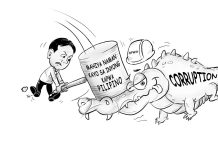
AS REPORTED by this paper recently, Western Visayas’ fisheries sector is experiencing a moment of triumph. In the first quarter of 2025 alone, the region recorded a 14.1% increase in fisheries production, reaching 59,786 metric tons from 52,415 metric tons the previous year. The region’s 117% fish sufficiency rate signals not just self-reliance, but a thriving aquaculture industry. But while the numbers look promising on the surface, deeper currents of concern threaten to undermine these gains.
Climate change and illegal fishing — two powerful, intersecting threats — are quietly eroding the foundations of Western Visayas’ fisheries productivity. Together, they present a double jeopardy that cannot be ignored.
Rising sea temperatures brought about by climate change are already altering aquatic ecosystems. Fish migration patterns are shifting, disease outbreaks are increasing, and water quality is deteriorating. These changes put stress on both wild catch and aquaculture operations. Bureau of Fisheries and Aquatic Resources (BFAR0 Region 6 director Remia Aparri acknowledges climate change as one of the pressing challenges facing the sector. If we do not act decisively, the region’s productive coastal and inland waters may soon become hostile to the very species they now support.
Compounding the issue is the persistent menace of illegal, unreported, and unregulated (IUU) fishing. These activities not only violate conservation laws but also destroy the very ecosystems — mangroves, seagrasses, and coral reefs — that serve as critical breeding and nursery grounds. The destruction of these habitats threatens long-term fish productivity and undermines legal fishers who depend on regulated access to marine resources for their livelihood.
Aparri rightly emphasized that everyone — not just fisherfolk — bears responsibility for the sustainable management of our marine resources. Without coordinated efforts among local government units, the national government, commercial operators, and the public, enforcement will remain weak and policies ineffective. Governance, as she pointed out, remains a major challenge.
To address these twin threats, Western Visayas should seriously consider adaptive, science-based strategies. This includes expanding and properly managing marine protected areas, investing in climate-resilient aquaculture technologies, and strengthening the implementation of seasonal closures like the one observed in the Visayan Sea. The closed season policy, which temporarily halts the capture of key species such as sardines and herring to allow reproduction, has shown tangible results, including a documented increase in fish populations. Its success must be scaled and complemented with other ecosystem-based approaches.
The region cannot afford complacency. If climate change is the storm on the horizon, then illegal fishing is the silent erosion at the shoreline. Both must be met with resolve, innovation, and cooperation.







